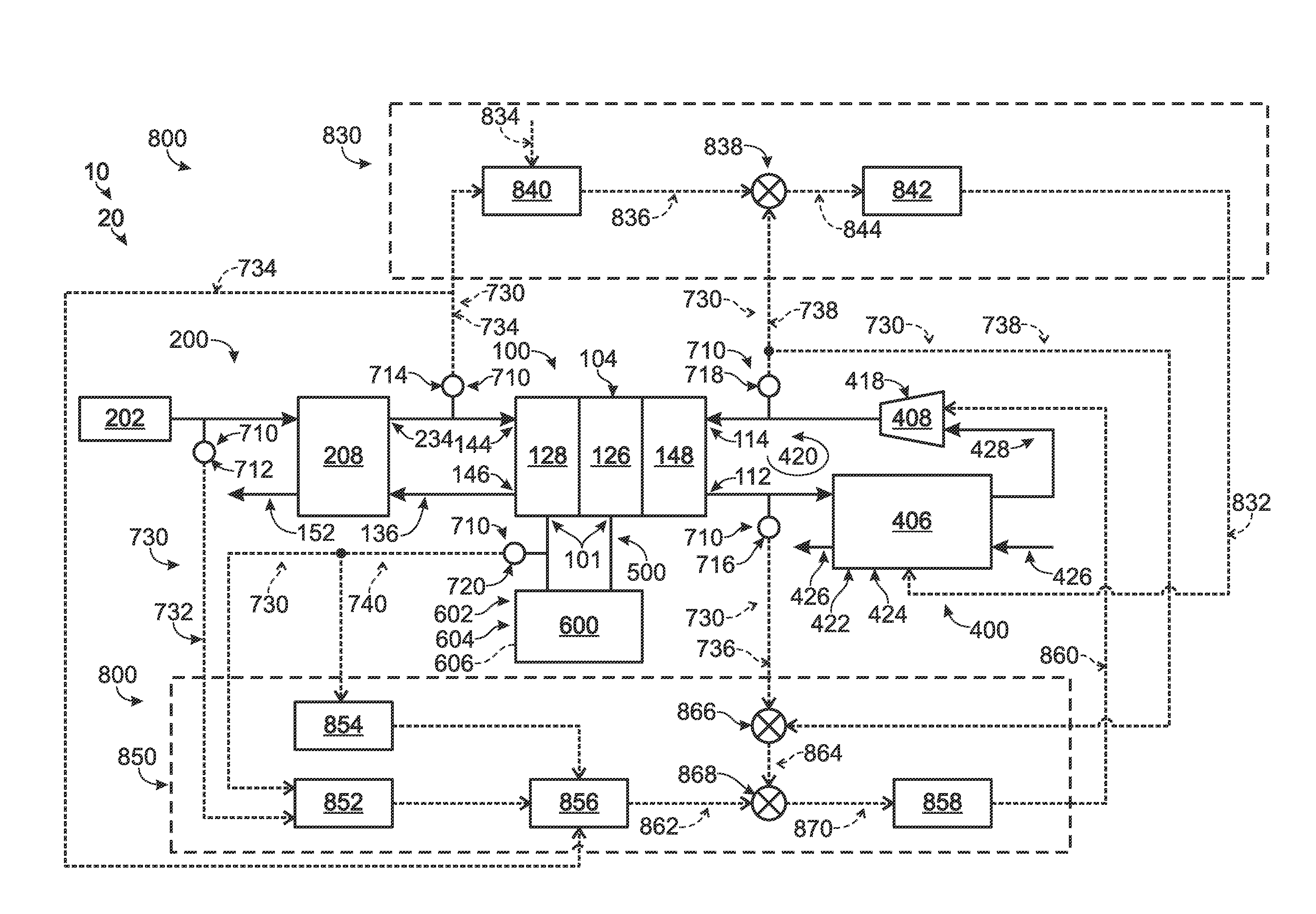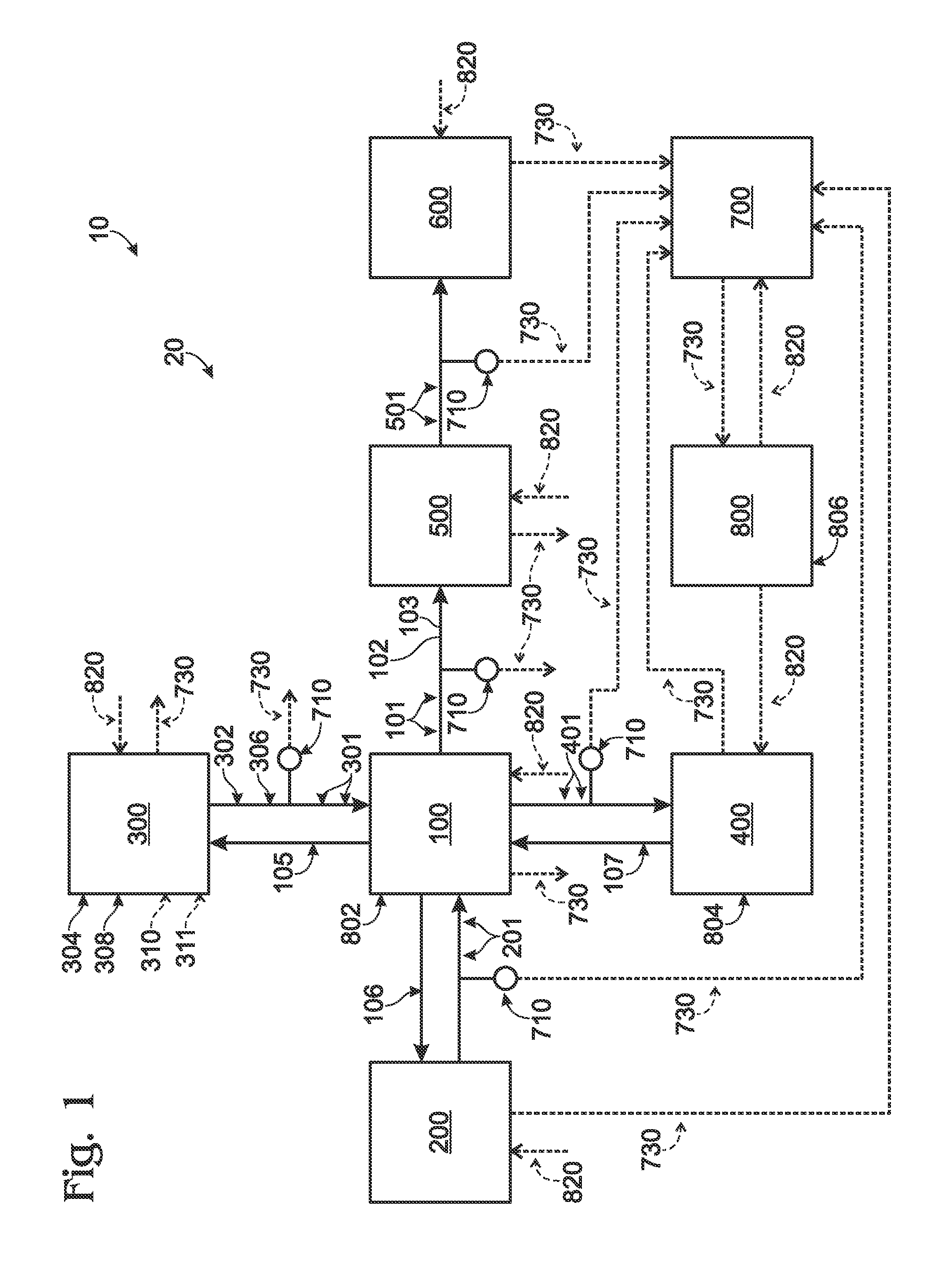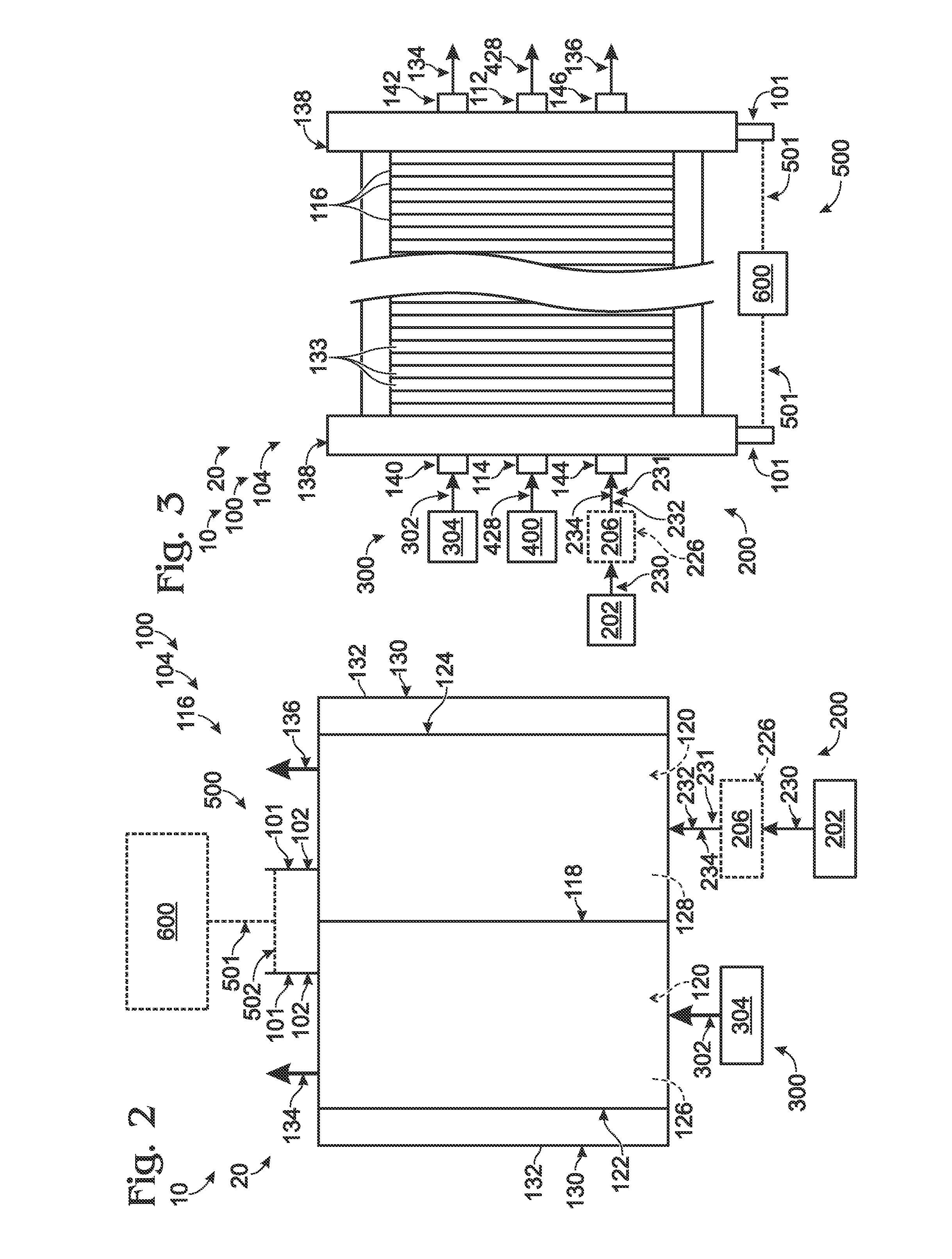Systems and methods for fuel cell thermal management
a fuel cell and thermal management technology, applied in the direction of fuel cell control, fuel cells, electrical equipment, etc., can solve the problems of fuel cell not being able to efficiently produce electrical output, reducing the proton conductivity of fuel cells, and affecting the efficiency of fuel cell electrical outpu
- Summary
- Abstract
- Description
- Claims
- Application Information
AI Technical Summary
Benefits of technology
Problems solved by technology
Method used
Image
Examples
Embodiment Construction
[0016]An illustrative, non-exclusive example of an energy producing and consuming assembly 10, which includes a fuel cell system 20, according to the present disclosure is schematically shown in FIG. 1. Fuel cell system 20 includes fuel cell assembly 100, oxidant supply system 200, fuel supply system 300, energy delivery system 500, energy consuming / storing assembly 600, sensor and interface system 700, and control system 800. As shown in FIG. 1, fuel cell assembly 100 receives one or more oxidant streams 201 from oxidant supply system 200 and fuel streams 301 from fuel supply system 300. Fuel cell assembly 100 is configured to utilize streams 201 and 301 in an electrochemical reaction to produce fuel cell output 101. Fuel cell output 101 may additionally or alternatively be referred to as the electrical output and / or the energy output of the fuel cell assembly, and it may further additionally or alternatively be referred to as electricity (such as is schematically indicated in FIG....
PUM
| Property | Measurement | Unit |
|---|---|---|
| temperature | aaaaa | aaaaa |
| thick | aaaaa | aaaaa |
| pressures | aaaaa | aaaaa |
Abstract
Description
Claims
Application Information
 Login to View More
Login to View More - R&D
- Intellectual Property
- Life Sciences
- Materials
- Tech Scout
- Unparalleled Data Quality
- Higher Quality Content
- 60% Fewer Hallucinations
Browse by: Latest US Patents, China's latest patents, Technical Efficacy Thesaurus, Application Domain, Technology Topic, Popular Technical Reports.
© 2025 PatSnap. All rights reserved.Legal|Privacy policy|Modern Slavery Act Transparency Statement|Sitemap|About US| Contact US: help@patsnap.com



